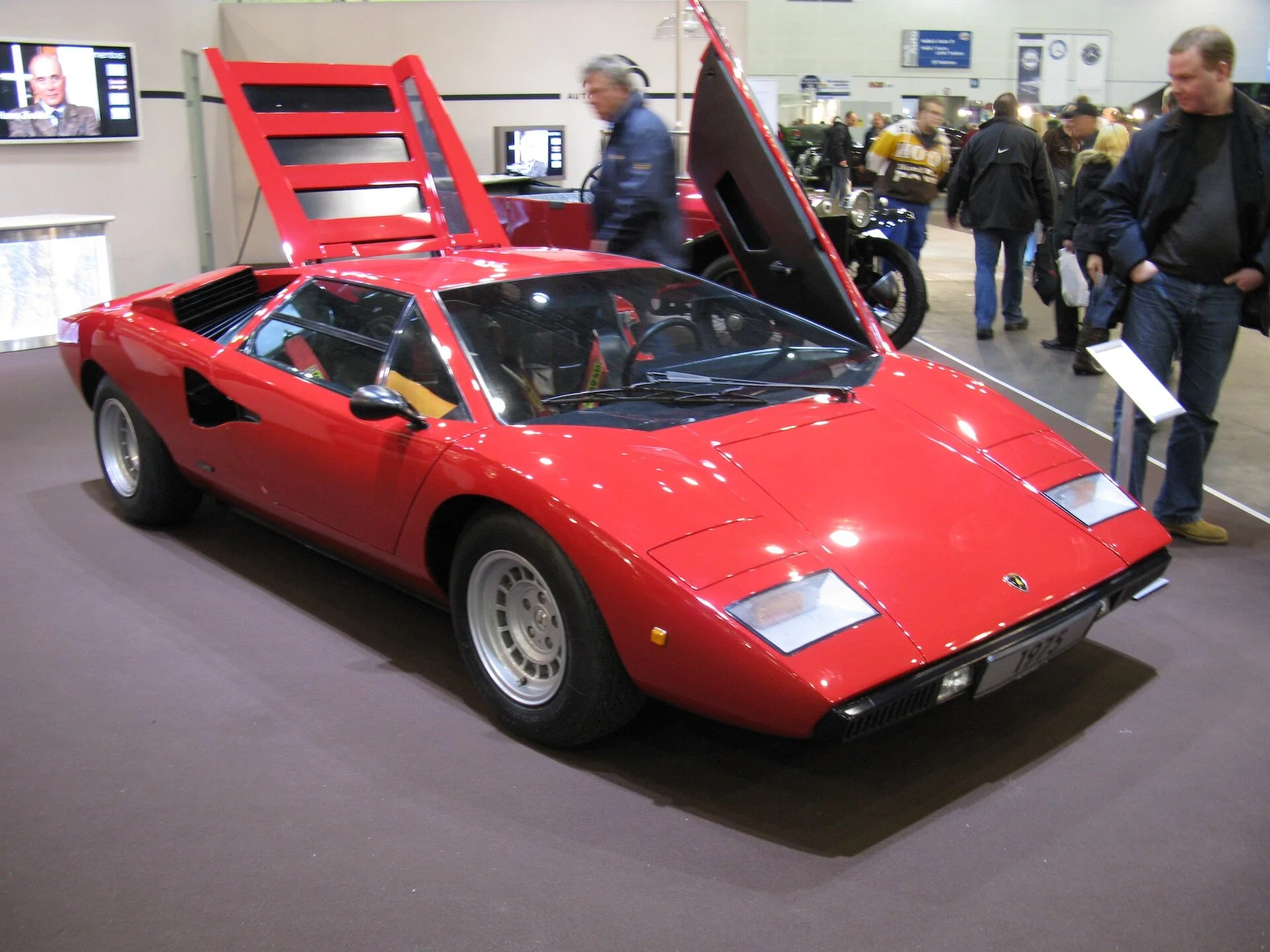1970s Supercars
The quest for ever-higher levels of performance has propelled the auto industry forward for more than a century, but the supercar as we know it in 2020 is a relatively recent creation. It’s not all about flat-out speed or horsepower; Panache is an important ingredient in the constitution of the modern supercar’s character. From scissor doors to unabashedly wedge-shaped designs, it all started in the 1970s.
Join us for a look at the most emblematic supercars made during the disco decade.
De Tomaso Pantera (1971)
In the early 1970s, motorists who visited a Lincoln-Mercury store sometimes spotted an unusual, low-slung coupe parked among the Continentals and the Comets. It was the De Tomaso Pantera, a mid-engined supercar built to deliver a well-balanced blend of Italian styling and American reliability.
Launched in 1971, the Pantera was drawn by Tom Tjaarda, an experienced stylist whose resume included the Fiat 124 Spider and the Ferrari 365 California, among many other cars. It looked like an Italian exotic, but it was powered by a 330-horsepower version of the Blue Oval’s famously tunable 5.8-liter Cleveland V8 engine. Ford initially agreed to distribute the Pantera in America, partly because its executives held a decade-old grudge against Ferrari, but it ended the partnership in late 1974.
Most historians agree about 5,600 examples of the Pantera found a home in the United States via Lincoln-Mercury’s dealer network between 1971 and 1974. Production continued without Ford’s input until 1992, and some later examples found their way to the United States via gray-market channels.
Ferrari 365 GT/4 BB (1973)
Ferrari unveiled the 365 GT/4 Berlinetta Boxer (BB) at the 1971 edition of the Turin auto show, though production didn’t start until 1973. Envisioned as a flagship model, it opened a new chapter in the Prancing Horse’s history because it was the first mid-engined street-legal model the firm put its name on. Dino’s mid-engined 206 was launched in 1967, but it was not officially marketed as a Ferrari.
Power for the Pininfarina-designed 365 GT/4 BB came from a 4.4-liter flat-12 that initially produced 380 horsepower. Approximately 387 examples were made until 1976, when an updated model named 512 BB made its debut with a 5.0-liter 12 and a handful of visual tweaks. It received fuel injection in 1981, and it retired in 1984, when it was replaced by the Testarossa. About 2,000 units were built.
Lancia Stratos HF (1973)
Lancia wasn’t excessively concerned about its image or its sales when it released the Stratos HF in 1973; it simply wanted to win races. Designed by Bertone stylist Marcello Gandini, it arrived on the rally scene as a nimble, mid-engined two-seater powered by a 2.4-liter V6 engine shared with the Ferrari Dino. It was a formula that paid off almost immediately: Lancia won the World Rally Championship in 1974, 1975, and 1976. It notably placed first in the Targa Florio, the San Remo Rally, and the Tour de Corse.
Lancia needed to build 500 street-legal examples of the Stratos to homologate it in Group 4. While production figures are murky, most historians agree the firm made only 492 units. It’s not powered by a mighty V12, but the Stratos earned its spot in the pantheon of 1970s supercars by winning races.
Lamborghini Countach (1974)
It’s not too far-fetched to argue the Lamborghini Countach is the foundation the modern supercar is built on. Released in 1974, it turned heads with a wedge-shaped design that was more commonly associated with wild concepts than with production models. It was also the first series-produced car fitted with scissor doors, a feature that still characterizes Lamborghini’s V12-powered models in 2020.
Marcello Gandini’s head-turning lines concealed a mid-mounted, 3.9-liter V12 engine tuned to send 370 horsepower to the rear wheels. Lamborghini later released more powerful variants of the Countach, like the Quattrovalvole with up to 449 horsepower, to fend off more modern rivals. Production ended in 1990 after about 1,983 units were built, and its spot in the Lamborghini range was filled by the Diablo.
BMW M1 (1978)
BMW put the Italians on notice when it unveiled the Paul Bracq-designed Turbo concept during the 1972 Summer Olympics held in its hometown of Munich, Germany. The coupe wasn’t envisioned as a production car, but it generated such a favorable response from the public that executives began looking for ways to make it a reality. BMW ultimately enlisted the help of Lamborghini.
On paper, the tie-up was relatively simple. Lamborghini would provide the Giugiaro-designed body and the chassis, while BMW’s M division would assemble the engine. This match made in heaven collapsed after Lamborghini delayed the project numerous times due to financial reasons. BMW decided to develop the M1 on its own, with the help of well-known suppliers in Italy and in Germany.
Finally introduced in 1978, the M1 was powered by a mid-mounted, 3.5-liter straight-six that put 277 horsepower under the driver’s right foot. Production ended in 1981, after BMW built 399 street-legal examples plus approximately 60 race cars. Although it did not spawn a direct successor, variants of its six-cylinder engine later powered the M635CSi and the first-generation M5.






